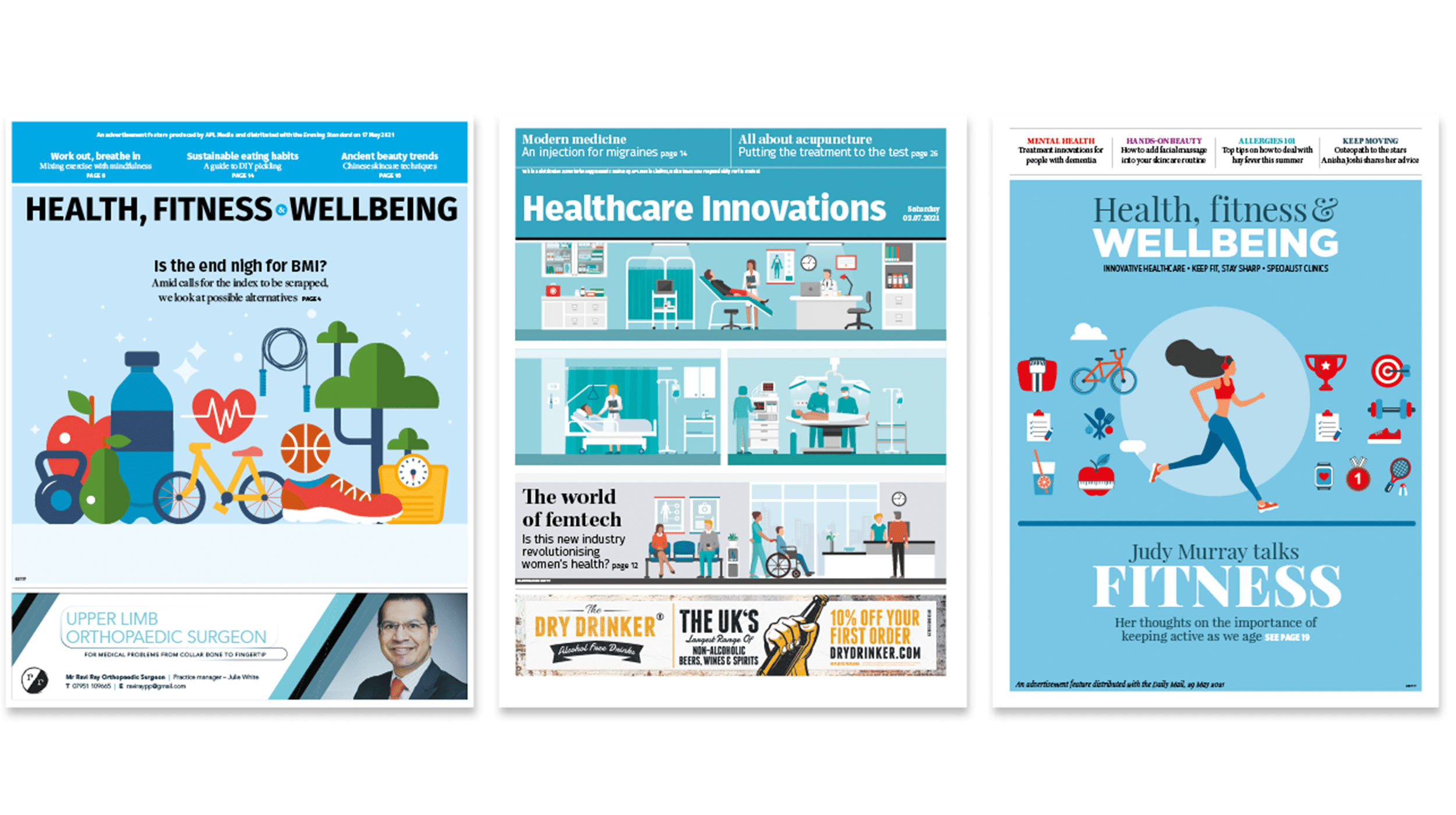
Three health and wellbeing pieces from APL Media’s newspaper division
Read excerpts from three health-related inserts produced by APL Media’s newspaper division and distributed with major national titles.
The science of sun protection
An edited extract from Healthcare Innovations, distributed with The Guardian on 3 July
SPF is supposed to tell you how long you can safely spend in the sun — for example, if you can manage 10 minutes before you burn, an SPF 30 sunscreen should mean you can safely multiply the time by 30.
Sounds simple, until you realise we’re not all the same, calling into question the effectiveness of these numbers. And in any case, sunscreen should be applied every two hours to ensure full and continued coverage. So, that SPF 100 bottle isn’t going to last any longer than an SPF 50.
Dr Ross Perry, the medical director of Cosmedics skin clinics and a skin cancer reconstruction surgeon, is wary of such products: “I’m sure we’ll see higher SPFs hitting the shelves in the UK, and this will be confusing for consumers who believe it offers way more protection, when the fact is it’s very minimal,” he warns.
Read more here.
Hands on skincare
An edited extract from Health, Fitness and Wellbeing, distributed with the Mail on 29 May
From facial massage to face yoga, those with an interest in skincare have taken things into their own hands. “Facial massages provide a workout for your face, boosting circulation and plumping the skin,” explains skin specialist Dr Lubna Khan-Salim.
You can easily add a massage into your skincare routine, but skin must always have a cream or oil applied first to let the hands glide. “Place a pea-sized amount on your hands, rub together and start working across your face with firm pressure to stimulate the skin,” says Dr Khan-Salim. “Don’t forget to include the neck and decolletage.”
One of the biggest trends is the use of a flat gua sha stone, a Chinese skincare technique that releases tension while increasing lymphatic drainage. “If you do it progressively over time, you re-educate your body,” explains aesthetician and Chinese medicine practitioner Ada Ooi.
Read more here.
The end of BMI?
An extract from Health, Fitness and Wellbeing, distributed with the Evening Standard on 17 May
“The use of BMI inspires body weight stigma, contributes to eating disorders and disrupts people’s body image and mental health.” These were the overarching words in a report published by the Women and Equalities Committee calling for Public Health England to focus on a ‘Health at Every Size’ approach.
GP Natasha Larmie has long been campaigning for medicine to become weight inclusive or neutral. A Harvard study revealed 75% of medical students have an implicit anti-fat bias — something Natasha believes only worsens after they qualify. This hasn’t gone unnoticed: the report revealed people with bigger bodies felt unable to access healthcare and shamed by their GP.
“If you just promote health, and take the weight part out, it’s much more successful,” Natasha says. “When you use BMI as a measure of success, you’re doing a disservice to all your patients.” But change of this magnitude requires a multi-pronged approach tackling policy, professional education and a societal shift in attitudes.
Read more here.
